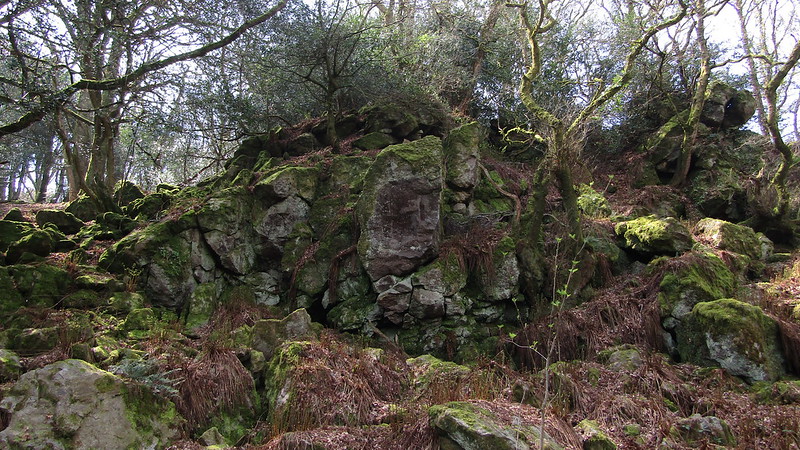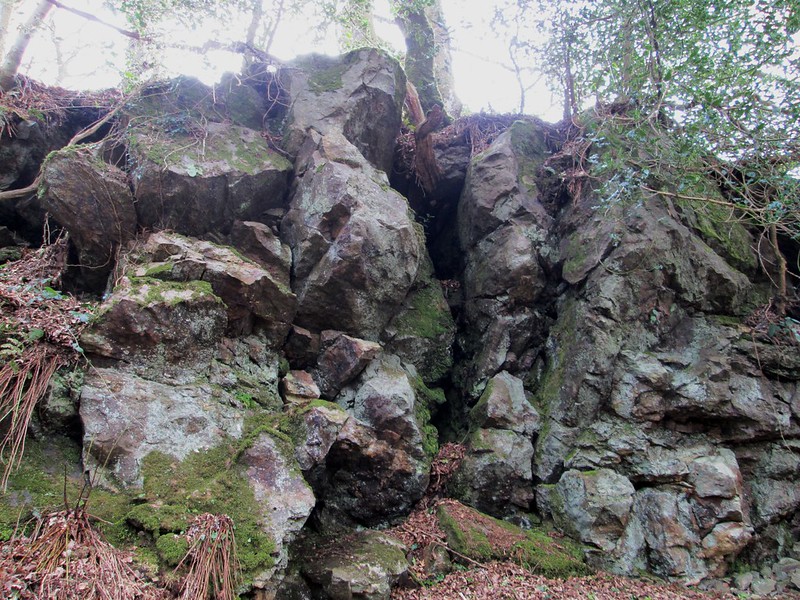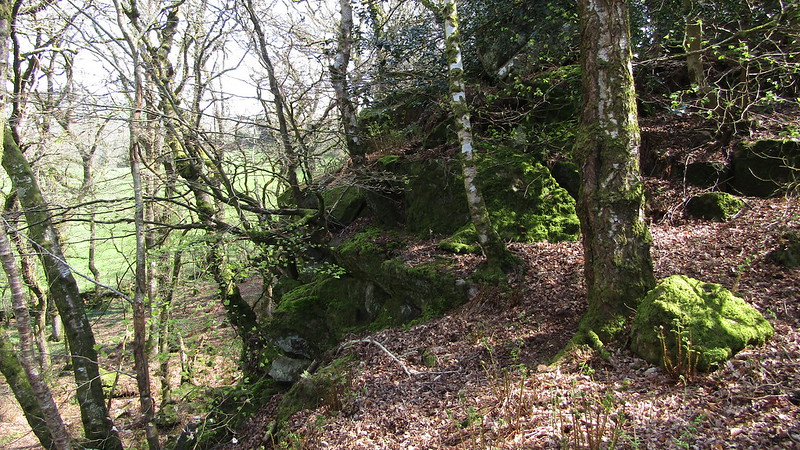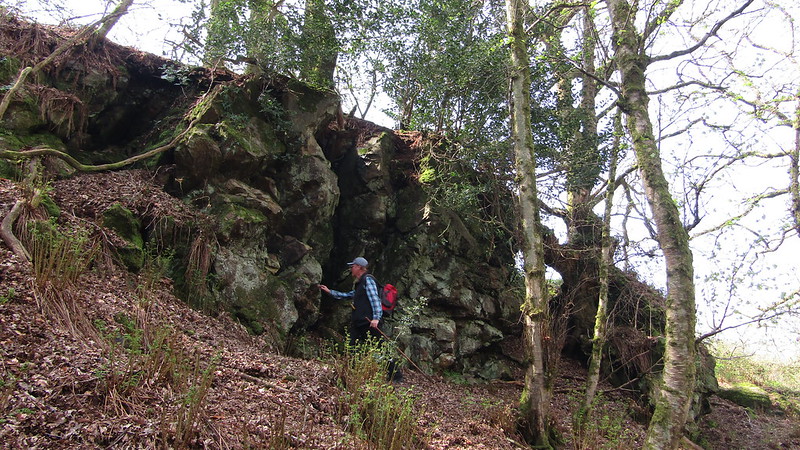TORS OF DARTMOOR
a database of both lesser- & well-known rocks and outcrops
Loxter TorLox Tor
 A spectacular series of crags jut from the hillside at the point where Loxter Copse joins Higher Knowle Wood. Composed of a rock known as Woolley Grit rather than granite the tor sprawls across the slope and is seen at its best from the north side. Richard Horsham who first described the area introduces the name of Loxter Tor for the rocks. The Woodland Trust owns and manages Higher Knowle Wood and in their 2017 Management Plan makes an intriguing reference to the impressive non-granite Loxter Tor that is described by the Trust as "an important exposure of rocks (Woolley Grits)".  It is an oddity and rare, in that the tor isn't composed of granite, nor metamorphic rock. Infused here is a sedimentary rock that has shaped a beautiful yet chaotic tor in the woods. Clamber up its uneven slopes from the bottom or stroll over to the summit from the nearby path. No visitor would have an inclination to be in such a place because despite being close to the public footpath the enormity of the rockpile is not fully realised until you find your way to the bottom of the Copse.  It is important to recognise Horsham's contribution here as he not only introduces the name of the tor and an accompanying photograph but also goes on to describe a most interesting geological feature, that of the theory about this area being the site of Dartmoor's oldest gorge. When writing about Knowle Rocks and Loxter Tor, he states that "These are formed of hard sandstone, Woolley Grit, looking a little like granite yet a conglomerate, made from the weathering of the granite and deposited by river action as gravel in a ravine, 66-23 MA while the Bovey Tracey fault was still active. It is confined in a narrow band and could represent hard evidence of the oldest known gorge on Dartmoor." For this significance alone the tor is well worth a visit.  It is highly probable that Loxter Tor is described much earlier by Cecil Torr in 1918, albeit not by name. Torr, who is well-known for reviving the May Day celebrations in the village of Lustleigh, says of the son of a family in Wreyland who was wanted by the police: "It was said that he was hiding in the cave in Loxter copse, and that food was carried up to him at night; but I do not know the truth of that. The copse is on the hill behind this house, and the cave is a hollow in a cleave of elvan rocks, low and narrow at the entrance, but more commodious inside, and branching into passages with practicable exits. It suits foxes very well, but would hardly suit a man who was not being hunted; though possibly I might get a tenant for it, if I gave the letting to a firm that let an urban house near here as 'a romantic semi-detached villa,' and another as 'The Retreat,' though it looked out on a garage and a stable, front and back."
| ||||||||||||||||||||||||||||